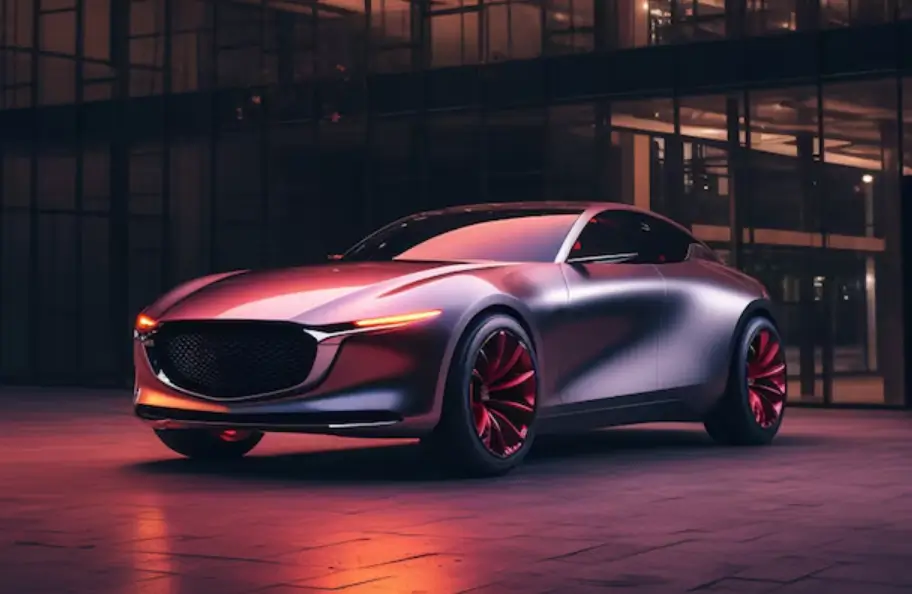When you think of luxury on four wheels, Mercedes-Benz is likely one of the first names that comes to mind.
Whether it’s the iconic three-pointed star, the sleek designs, or the brand’s reputation for quality, Mercedes-Benz holds a firm place in the pantheon of elite carmakers.
But how did this legendary brand rise to the top of the luxury automotive world? The road to success wasn’t always smooth, and many factors contributed to its global dominance.
While most know Mercedes for its luxurious vehicles, fewer people understand the deeper story—one filled with resilience, innovation, and strategic thinking that elevated Mercedes-Benz beyond mere luxury cars.
Let’s dive deeper into the brand’s history and explore how it became the global icon it is today.
DOWNLOAD:”Mercedes-Benz The Rise of a Global Luxury Icon”.PDF
The Humble Beginnings: Where It All Started
Mercedes-Benz’s journey began long before it was the luxury powerhouse we know today. It traces its roots back to 1886 when Karl Benz developed the world’s first gasoline-powered automobile, the “Motorwagen.”
At the time, no one could have predicted that this three-wheeled contraption would lay the groundwork for an automotive empire.
A lesser-known fact is that Benz initially struggled to sell his invention. People were skeptical about the safety and practicality of automobiles. In fact, it wasn’t until his wife, Bertha Benz, took matters into her own hands that things began to change.
In 1888, Bertha embarked on the first long-distance automobile journey, driving over 62 miles with her two sons, essentially proving to the world that the car was reliable and practical.
This pivotal moment laid the foundation for the brand’s ethos of innovation and practicality, even though it didn’t become an overnight success. The story of Mercedes-Benz is one of persistence, with small wins building up over time.
The Birth of the Mercedes Brand: A Strategic Turn
It wasn’t until the early 1900s that Daimler-Motoren-Gesellschaft (DMG), the company that would eventually merge with Karl Benz’s company, introduced the name “Mercedes.”
Interestingly, the name came from Mercedes Jellinek, the daughter of a wealthy Austrian businessman, Emil Jellinek, who was involved in selling DMG cars.
His insistence on high-performance racing cars led to the development of the Mercedes 35 HP, which was revolutionary at the time.
Why is this important? Because this marked the beginning of Mercedes-Benz’s focus on innovation and performance. The car’s success on the racetrack helped Mercedes gain a reputation for producing fast, reliable, and luxurious vehicles. This was the first glimpse of what would eventually become the brand’s hallmark.
Innovation in Design and Engineering: The Game Changers
One of the key components of Mercedes-Benz’s rise to fame is its commitment to innovation. While many automakers were content with sticking to the status quo, Mercedes consistently pushed boundaries. A few pivotal innovations truly set the brand apart:
-
The Invention of the Crumple Zone: Mercedes-Benz was the first to introduce the crumple zone in 1959, designed to absorb impact during a crash. This was a revolutionary safety feature that saved countless lives and established the brand as a leader in automobile safety.
-
The First Diesel-Powered Passenger Car: In 1936, Mercedes-Benz became the first automaker to offer a diesel engine in a passenger vehicle, with the Mercedes-Benz 260D. This move towards fuel efficiency showed that the brand wasn’t just about luxury but also practicality.
-
Airbag Innovation: Mercedes didn’t stop at crumple zones. The brand was one of the early adopters of airbags, integrating them into their vehicles starting in the 1980s.
-
The Reinvention of the S-Class: The Mercedes-Benz S-Class isn’t just a luxury sedan—it’s the car that has often set the standard for technological advancements. From early ABS systems to pioneering autonomous driving features, the S-Class has been a rolling showcase of innovation.
Mercedes-Benz doesn’t just build cars; it creates groundbreaking machines that set the industry standards for safety, luxury, and technology.

Surviving Challenges: The Tough Times
Mercedes-Benz’s journey wasn’t without its challenges. Like all great businesses, the brand had to weather difficult times, especially during World War I and World War II. Both world wars disrupted production and significantly impacted the company’s operations.
But what many don’t know is how strategically Mercedes-Benz bounced back after these crises. In the post-World War II era, as much of Europe was rebuilding, Mercedes-Benz capitalized on its engineering prowess and produced affordable high-quality vehicles.
Cars like the Mercedes 300SL Gullwing helped reinvigorate the brand and became an instant classic with its unique design and high performance.
Secret Sauce: Marketing and Brand Perception
Mercedes-Benz didn’t just rely on its cars to create its global image; the brand was strategic in its marketing efforts. From the very beginning, Mercedes-Benz understood the importance of aligning its vehicles with a sense of luxury.
By sponsoring high-profile racing events and placing their vehicles in the hands of influential people, Mercedes-Benz managed to make the three-pointed star a symbol of exclusivity.
Another fascinating angle that many miss is Mercedes-Benz’s focus on long-term relationships with customers.
Rather than being a one-time purchase, Mercedes-Benz cars are positioned as lifetime investments, creating loyalty through superior after-sales service and vehicle longevity.
The brand worked hard to make sure customers weren’t just buying a car; they were buying into a lifestyle of prestige and quality.
Today’s Challenges: Keeping Up with Change
In recent years, Mercedes-Benz has faced new challenges, from the rise of electric vehicles to increasing competition from brands like Tesla.
Yet, the company continues to adapt by heavily investing in electric mobility. The launch of the EQ series (electric vehicles) shows that Mercedes-Benz is looking to lead the charge in the future of clean, sustainable transportation.

Conclusion: A Legacy of Luxury and Innovation
Mercedes-Benz’s rise to becoming a global luxury icon wasn’t an overnight success story. From its early innovations in safety and engineering to strategic marketing and resilience during tough times, Mercedes-Benz has continuously set itself apart in the crowded automotive market.
As the brand moves toward a future of electric vehicles, the commitment to luxury, performance, and innovation remains as strong as ever. With a legacy like this, can Mercedes-Benz maintain its leadership in the fast-changing world of automobiles?





